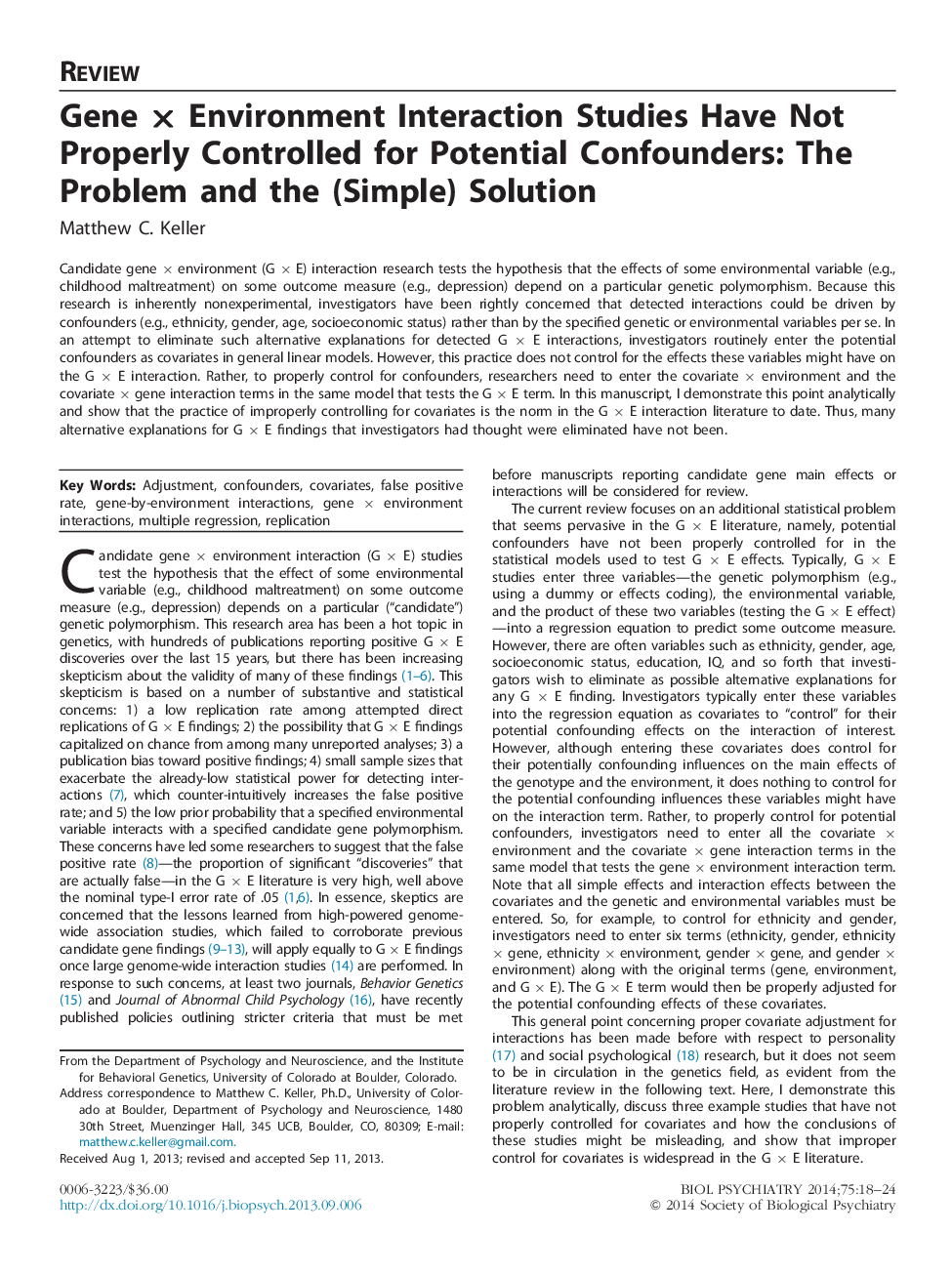| Article ID | Journal | Published Year | Pages | File Type |
|---|---|---|---|---|
| 4177818 | Biological Psychiatry | 2014 | 7 Pages |
Candidate gene × environment (G × E) interaction research tests the hypothesis that the effects of some environmental variable (e.g., childhood maltreatment) on some outcome measure (e.g., depression) depend on a particular genetic polymorphism. Because this research is inherently nonexperimental, investigators have been rightly concerned that detected interactions could be driven by confounders (e.g., ethnicity, gender, age, socioeconomic status) rather than by the specified genetic or environmental variables per se. In an attempt to eliminate such alternative explanations for detected G × E interactions, investigators routinely enter the potential confounders as covariates in general linear models. However, this practice does not control for the effects these variables might have on the G × E interaction. Rather, to properly control for confounders, researchers need to enter the covariate × environment and the covariate × gene interaction terms in the same model that tests the G × E term. In this manuscript, I demonstrate this point analytically and show that the practice of improperly controlling for covariates is the norm in the G × E interaction literature to date. Thus, many alternative explanations for G × E findings that investigators had thought were eliminated have not been.
